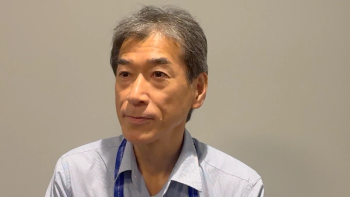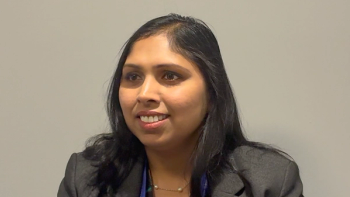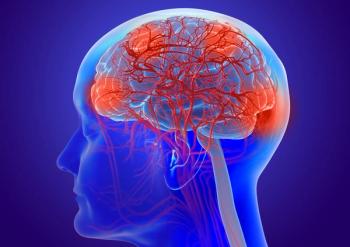
- Oncology Vol 28 No 12
- Volume 28
- Issue 12
Grade II Gliomas-Not So Low Grade
There have been and continue to be areas of uncertainty surrounding the treatment of grade II gliomas. One in particular is the optimal timing of treatment.
As an oncologist, and particularly as a neuro-oncologist, I am no novice at breaking bad news, or at discussing difficult prognoses with my patients and their loved ones. I entered practice somewhat unprepared, however, for the shock and disbelief with which I was met when I explained the malignant and incurable nature of grade II glioma. I have almost come to expect that patients will have been told by the physicians involved prior to their oncology referral that this tumor is curable and perhaps not even malignant. I have had phrases repeated to me such as “this is the good kind,” “we got it all”-and my personal favorite and near-oxymoron: “this is the best brain tumor to have.” I think that these misleading descriptions stem not just from imprecise terminology and our reluctance to have challenging conversations, but also from a lack of understanding and knowledge of the treatment and prognosis of this diverse and rare group of tumors.
First, we need to be more specific with our language. While many of us (and I am guilty of this too) use “low-grade glioma” to denote the more common grade II gliomas-astrocytomas, oligodendrogliomas, and oligoastrocytomas-this term technically also includes grade I gliomas, such as pilocytic astrocytomas, which can potentially be cured with complete resection. The World Health Organization (WHO) recommends avoiding the term “low-grade glioma,” since it groups together almost two dozen WHO grade I and grade II glial neoplasms. Despite this recommendation, if you look up “low-grade glioma” in the index of the latest (2007) edition of the WHO Classification of Tumours of the Central Nervous System,[1] you will be directed to the first page of the section on diffuse astrocytomas!
Amorphous descriptors like “tumor” and “mass” are often misleading to patients and can lead to unrealistic expectations. I’ve found it helpful to explain the grading schema with patients at our initial visit and to illustrate the microscopically infiltrative nature of grade II gliomas, especially to allay confusion on the part of those who have undergone gross total resection and who have the impression that they have been surgically cured. While undeniably painful for us to discuss-and life-altering for our patients to hear-it is vital that we resist the temptation to gloss over the fact that these are “cancer,” are not curable, and will shorten their life expectancy.
As the timely review by Dr. Grossman and colleagues notes,[2] there have been and continue to be areas of uncertainty surrounding the treatment of grade II gliomas. One in particular is the optimal timing of treatment. Since European Organisation for Research and Treatment of Cancer (EORTC) trial 22845 (which compared early radiation with radiation deferred until progression) demonstrated no survival benefit for early radiation therapy,[3] there has been widespread acceptance among neuro-oncologists of the practice of observing-with serial imaging and clinical exams-young asymptomatic patients, particularly those with oligodendroglial histology and those who have undergone complete resection. While I approve of using observation alone in selected patients, this practice likely contributes to what I consider the “myth of benign-ness” of grade II glioma. It is my hope that the discourse elicited by the updated results of Radiation Therapy Oncology Group (RTOG) trial 9802[4] will increase awareness among our colleagues in primary practice, neurology, and neurosurgery-as well as among us oncologists-of the malignant nature of grade II gliomas.
Financial Disclosure: The author has no significant financial interest in or other relationship with the manufacturer of any product or provider of any service mentioned in this article.
References:
1. The International Agency for Research on Cancer (IARC); Louis DN, Ohgaki H, Wiestler OD, Cavenee OK, editors. WHO classification of tumours of the central nervous system (IARC WHO classification of tumours, vol. 1). 4th ed. World Health Organization (WHO). 2007.
2. Strowd RE III, Holdhoff M, Grossman SA. Chemotherapy for treatment of grade II gliomas. Oncology (Williston Park). 2014;28:1036-43.
3. Karim AB, Afra D, Cornu P, et al. Randomized trial on the efficacy of radiotherapy for cerebral low-grade glioma in the adult: European Organization for Research and Treatment of Cancer Study 22845 with the Medical Research Council study BRO4: an interim analysis. Int J Radiat Oncol Biol Phys. 2002;52:316-24.
4. Buckner JC, Pugh SL, Shaw EG, et al. Phase III study of radiation therapy (RT) with or without procarbazine, CCNU, and vincristine (PCV) in low-grade glioma: RTOG 9802 with Alliance, ECOG, and SWOG. J Clin Oncol. 2014:32(suppl 5s):abstr 2000.
Articles in this issue
almost 11 years ago
Chemotherapy for Low-Grade Gliomas: Lessons and Questionsalmost 11 years ago
Chemotherapy for Treatment of Grade II Gliomasalmost 11 years ago
Tailoring Chemotherapy for Low-Grade Gliomasalmost 11 years ago
What We Can Learn From Our Patientsalmost 11 years ago
Improving Outcomes in Advanced DLBCL: Systemic Approaches and Radiotherapyalmost 11 years ago
Advanced DLBCL: As Systemic Therapy Improves, the Need for RT Diminishesalmost 11 years ago
Who Should-or Should Not-Receive RT for DLBCL?almost 11 years ago
Cancer Stem Cells: Implications for Cancer Therapyalmost 11 years ago
Cancer Stem CellsNewsletter
Stay up to date on recent advances in the multidisciplinary approach to cancer.



















































































